At the time of this writing, the Portage Iron Bridge is being dismantled, replaced by a beautiful new arch bridge just south of the 1875 trestle. Soon, like the wooden bridge that preceded it, the old trestle will exist only in photographs and in the memories of those of us who have enjoyed seeing it over the years. We post the following images as a salute to an "old friend" that will live on as part of the history of Letchworth State Park. Other images and information on the Bridge can be found through the index pages in our Historic Photo Album, Glimpses of the Past and the Pieces of the Past sections of this website. We have linked to several of them in the labels. |
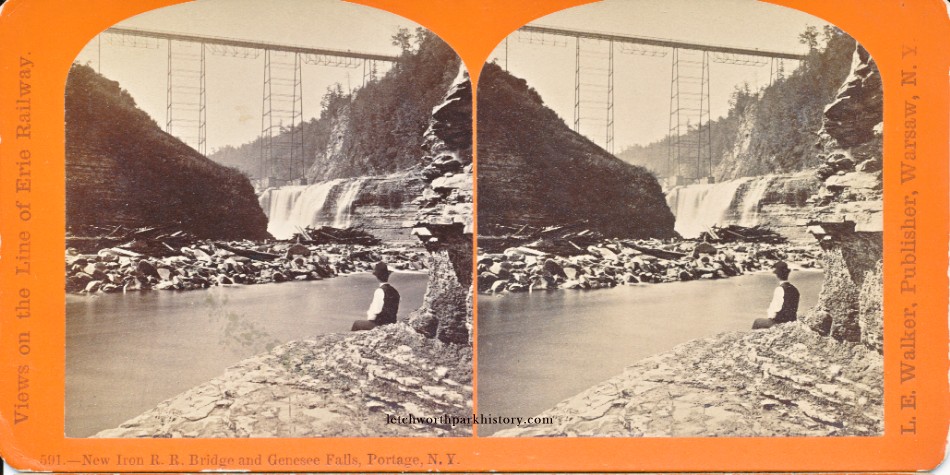 |
|||||
| Above: This stereoview by L. E. Walker of Warsaw was probably taken in the early fall of 1875. The charred remains of the original wooden bridge that burned the previous May are still visible in the river bed, but it is the new iron trestle which has caught the visitor's attention. Soon dubbed the "Iron Spider Bridge", the Bridge's seemingly frail form, after a couple of major overhauls, would last nearly 143 years. | |||||
|
|||||
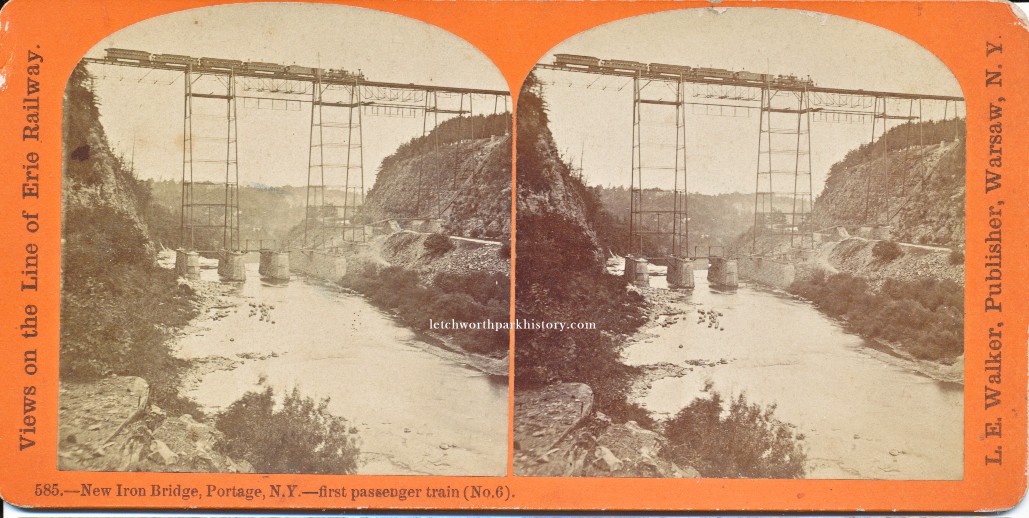 |
|||||
Above: Resembling the historical image of the first test train on the Iron Bridge, this image shows the first passenger train that passed over the new trestle. Note the extra stone pier in the river bed that will later be removed. The Genesee Valley Canal and its towpath is visible part way up the bank on the right. The image was taken looking from the south, with the top of the Upper Falls just beyond the bridge. Below: This photograph by George Washburn of Castile shows the same area a few years later. The extra stone pier in the river has been removed and the catwalk with railing between the piers have been replace by a single iron beam. Note that the Genesee Valley Canal can still be seen to the right placing the date before the canal closed for good in the fall of 1878. Can you pick out the Glen Iris in the background? |
|||||
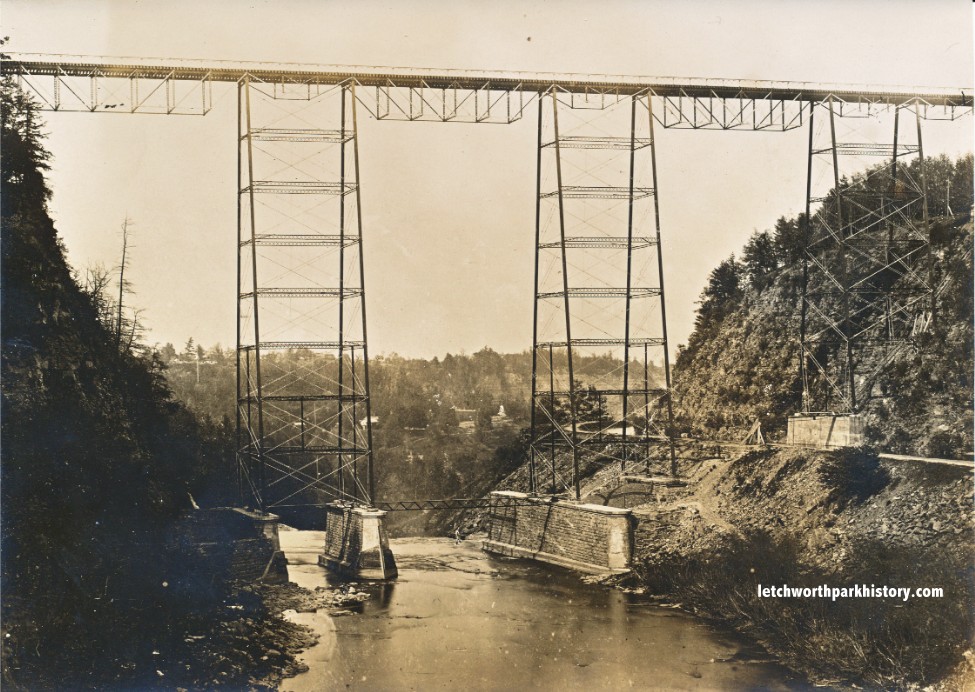 |
|||||
Below Left: Photographer C.W. Tallman of Batavia NY was standing on the south side of the bridge looking west when he took this image. Please note that around this time there was only a wagon track under the west end of the bridge leading to a turn-around where visitors to the Glen Iris were met. (See the 1890 estate map.) The modern entrance road came in the 1920s when the American Scenic and Historic Preservation Society was manager of the new Park and was encouraging tourist access from the south. Below Right: Frank Hewitt took this view from the opposite end of the bridge from the Tallman view. He had also moved to the north side and captured in detail the iron rod support system and the wooden railing. Some closeups of the railing can be seen here. |
|||||
|
|||||
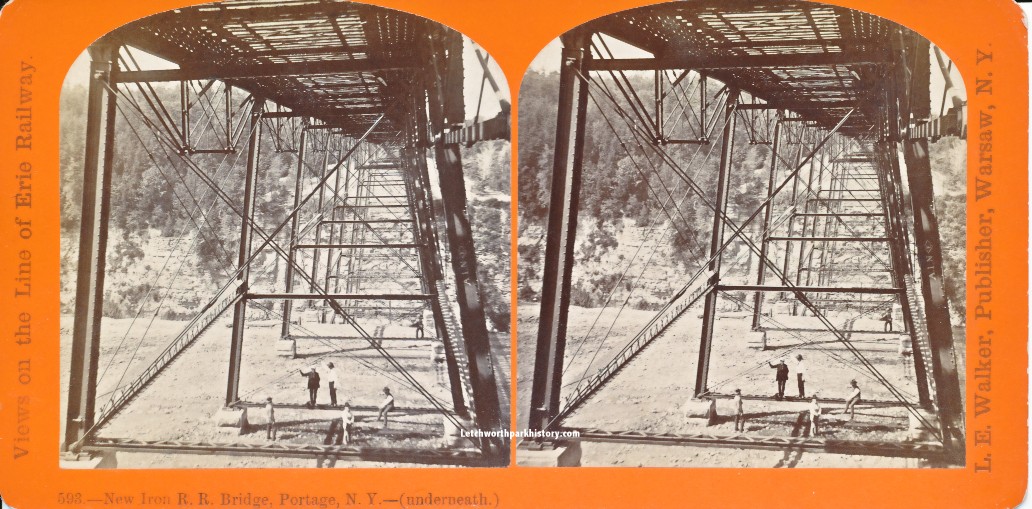 |
|||||
Above: A group of men pose underneath the east end of the "new" Iron Bridge in this image taken by Walker probably in the late 1875 or 1876. As you can imagine, this is an impressive view in the stereoscope! It is similar to Image 157, but taken later after construction debris has been cleared. With the Cascade House and train station nearby this general area known as "Portage Park" was popular with tourists. See Images 190, 139, and a 1902 railroad map for more details. |
|||||
|
|||||
|
|||||
Above Left: This view was published as part of a stereoview by W.L. Sutton of Hornellsville NY. It is a view many modern visitors have seen as they walked the path from the picnic grounds up to the Bridge. There are some differences though - the stairway just beyond the bridge leading up the bank is gone and the footer or pier on the far side of the river has been enlarged and strengthened with concrete. Note that two of the unused piers from the wooden bridge were in the process of being removed when the photograph was taken. You can see the before and after of this removal process in some of the photographs above. The name "Horse Shoe Falls" was sometimes used for the Upper Falls. Above Right: This image by Frank Hewitt of Nunda was taken on top of the Iron Bridge. Here we are standing near the west end of the bridge, looking east toward Portage Station. The structure on the right served as a windbreak on the bridge, while wooden planks have been placed on the left to accomodate tourists. (This was in the days before the railroad closed the bridge to tourists!) |
|||||
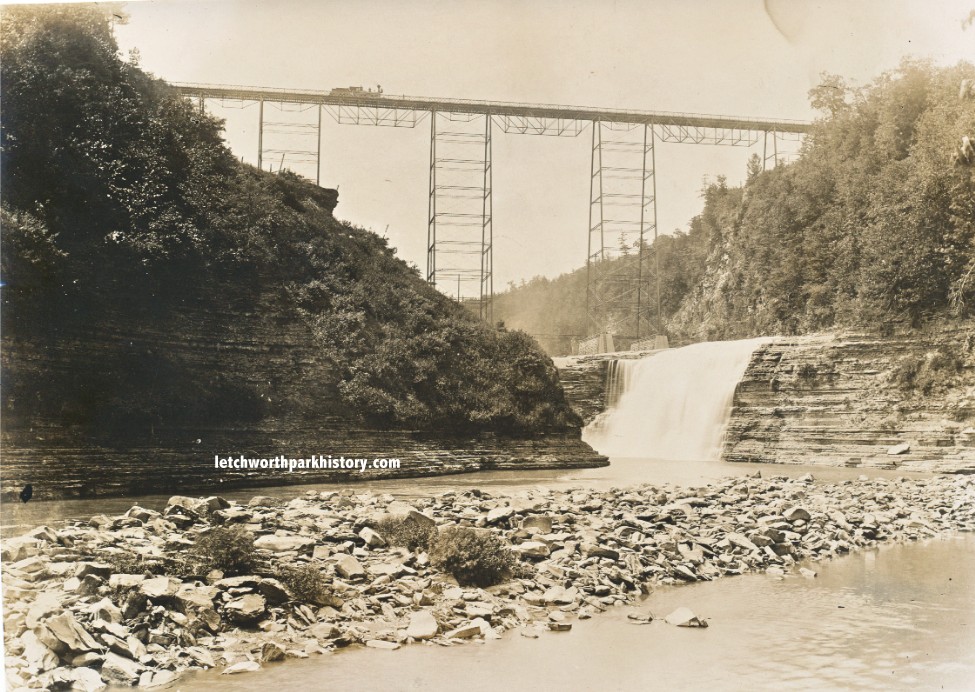 |
|||||
| Above: George Washburn of Castile took this wonderful photograph of the Bridge towering over the Upper Falls in the early 1900s. By that time the ruins of the Portage Wooden Bridge had been washed away by countless floods. Soon most of the physical remains of the Iron Bridge will be gone from this area. It is hoped that some small parts of the Bridge will be preserved and displayed somewhere in the Park. | |||||
|
|||||
| Remember - other images and information on both the Wooden and Iron Bridges can be found through the index pages in our Historic Photo Album, Glimpses of the Past and the Pieces of the Past sections of this website. You can find addition photographs and material on them in our Letchworth Park History Books described at the bottom of our table of contents page. | |||||